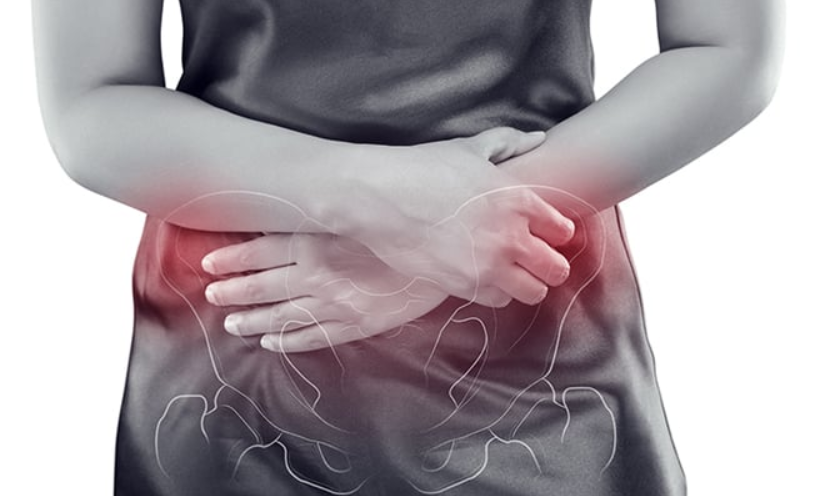Millions of women suffer from chronic pelvic pain (CPP) every day. But what is it, exactly? And what are the most common causes? In this post, the Center for Vascular Medicine answers those questions and more. We’ll also explore how CPP is diagnosed. Keep reading to learn more.
What is chronic pelvic pain?
Chronic pelvic pain is pain that lasts for six months or more and occurs in the pelvic area. This type of pain is more common in women than men, and it can be caused by a variety of things, as you will see below.
Endometriosis
Endometriosis is one of the most common causes of chronic pelvic pain in women. It is a condition where tissue that lines the inside of the uterus (endometrium) grows outside of the uterus. This misplaced tissue can attach to organs in the pelvis, such as the ovaries, fallopian tubes, bladder, or rectum, and cause pain. Endometriosis can also lead to infertility.
Pelvic inflammatory disease
PID is an infection of the upper female genital tract, most often caused by sexually transmitted bacteria. The infection can spread to the uterus, Fallopian tubes and ovaries. If left untreated, PID can lead to infertility, ectopic pregnancy and even death. Common symptoms of PID include lower abdominal pain, fever, irregular menstrual bleeding, nausea and vomiting. If you experience any of these symptoms, see your doctor right away for diagnosis and treatment.
Fibroids
Uterine fibroids are noncancerous tumors that grow in or on the walls of the uterus. While they’re not always painful, they can cause a lot of discomforts, especially during periods. If you’re experiencing chronic pelvic pain and you think it might be due to uterine fibroid, talk to your doctor. They can help you figure out the best treatment plan for you.
Ovarian remnant
Ovarian remnant syndrome is among the most common cause of chronic pelvic pain in women. This occurs when a portion of the ovary is left behind after surgery. Symptoms of ovarian remnant syndrome can include pelvic pain, pain with intercourse, irregular periods, and pain with ovulation. If you are experiencing any of these symptoms, it is important to speak to your doctor.
Irritable bowel syndrome
Irritable bowel syndrome, or IBS, is a gastrointestinal disorder that can cause pain and discomfort in the pelvic area. The pain can range from mild to severe and is often accompanied by other symptoms such as bloating, constipation, and diarrhea. IBS is a common disorder affecting up to 1 in 5 people in the United States. There is no one cause of IBS, but it is believed to be caused by a combination of factors such as genetics, diet, stress, and lifestyle. There is no cure for IBS, but there are treatments that can help lessen the symptoms.
Interstitial cystitis
Interstitial cystitis (IC) is a bladder condition that results in pain and inflammation. It’s one of the most common causes of chronic pelvic pain in women and can often be very difficult to treat. Symptoms of IC can vary from person to person but may include pain in the bladder area, pressure or tenderness in the pelvic region, and Frequent urination (although you may also feel the need to go more often than normal). There is currently no cure for IC, but there are a number of treatment options available that can help relieve symptoms.
Past or present sexual abuse
Sexual abuse is a very common cause of chronic pelvic pain in women. If you have experienced abuse in the past, it’s important to seek help from a therapist or counselor. They can help you work through the pain and trauma you may have experienced.
How is chronic pelvic pain diagnosed?
There is no one test to diagnose chronic pelvic pain. A variety of tests may be used to help diagnose the cause of chronic pelvic pain in women. These tests can help your doctor rule out or identify potential causes, such as infection, ovarian cysts, uterine fibroids, and endometriosis. Your doctor will likely start by asking about your medical history and symptoms. He or she will also perform a physical exam, which may include a pelvic exam. Depending on your symptoms, your doctor may also order tests such as:
– A pelvic ultrasound to look for cysts or tumors
– A CT scan or MRI to look for signs of infection, inflammation, or other abnormalities
– A Pap test to check for cervical cancer or other infections
– Blood tests to check for markers of infection or inflammation
As we’ve seen, chronic pelvic pain can be caused by a variety of factors. It’s important to get a diagnosis and start treatment as soon as possible in order to reduce your symptoms and improve your quality of life. If you’re experiencing chronic pelvic pain, don’t hesitate to talk to your doctor.

